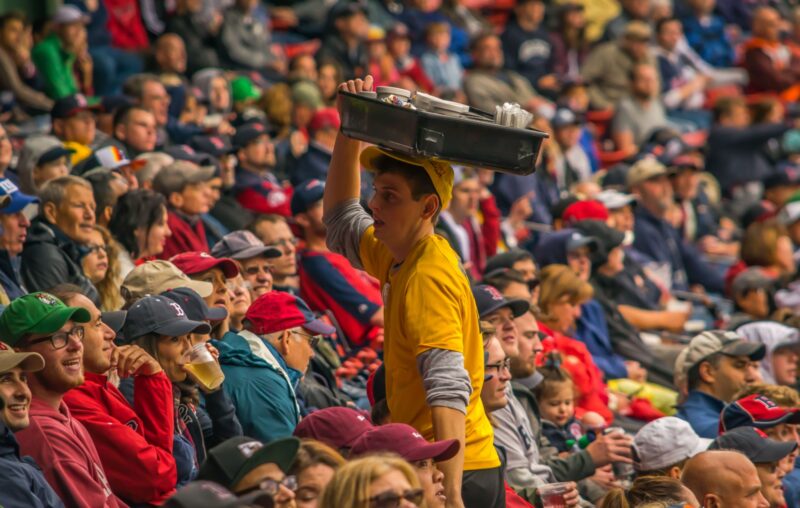Baseball, a Beer, and a Dog

Everything old is new again. Opening day is upon us. And in a world that keeps serving up repeats like Biden v. Trump, and stale rehashes like Ghostbusters: The Next Generation, or whatever they’re calling this particular rehash, it can’t come soon enough. No, nothing signifies rebirth like the coming of another baseball season. And with at least 24 of the 30 major league teams having at least some modest hope of making the postseason, this is the only time of year in the United States when we all sit back and imagine that if everything breaks in just the right way, then maybe, just maybe…
For those old enough to remember a time when the Red Sox were baseball’s tragedy, and the Cubs its comedy, the idea of anything being possible is palpable.
But honestly, even if your team doesn’t have much hope of winning the World Series, and the Oakland As and the Colorado Rockies probably have a better shot at winning the Super Bowl than the World Series, there is still nothing better than a night out at the ballpark. Fans in Oakland and Denver can at least console themselves that they can see one good major league team at the park, even if it’s always the visiting team. And while major league ticket prices are all over the map, as little as $3 for some seats to see the White Sox, and as much as $500 to catch the Red Sox home opener from atop the Green Monster, the cost of a hot dog and a beer once you’ve paid for your admission tells you what kind of night you’ll be having at the park.
100 years ago a hot dog at a major league stadium would set you back a dime. That’s just a touch north of $1.80 in inflation-adjusted dollars and would be an absolute steal if you could get it today. But you can’t. Not even close. The best you can do this season is $2.75 at Chase Field in Arizona, which is considerably below the big league average of $5.32, and way below the most expensive hot dog in the majors, which is $7.75 at Petco Park in San Diego.
But everything costs more in San Diego, even if it doesn’t taste any better.
And what did a beer cost 100 years ago? Those of you reading closely know that’s a trick question. 100 years ago we were four years into the most misguided 13-year experiment in American history: Prohibition. But a Coke typically cost a nickel back then, or about 90 cents in 2024 dollars. By the time we came to our national senses and reintroduced beer to the ballparks for the 1934 season, a cup would set you back about 10 cents, or a whopping $2.32 in 2020 dollars.
Compare that paltry sum to the cheapest beer in the majors for 2024, which is $3 at, you probably guessed it, Coors Field. The next cheapest is $4.44 at the Rogers Centre where the Blue Jays play. That’s in American dollars, but the alcohol content is all Canadian, where there isn’t much difference between beer and moonshine. On the other side of the coin, the most expensive beer in the major leagues is found where everything seems to be most expensive: Washington, DC. At Nationals Park a single beer will set you back $14.99. The major league average? Just a couple of pennies short of $7.
What does it all mean? Not much considering the average ticket price in 2024 is $68.90. But if you can get yourself into the park in the cheap seats, you can certainly spring for a beer and a dog. And under the stars in late March, when everything is possible, with the major league average under $12.50, that’s a real bargain.
Happy Baseball Season.









